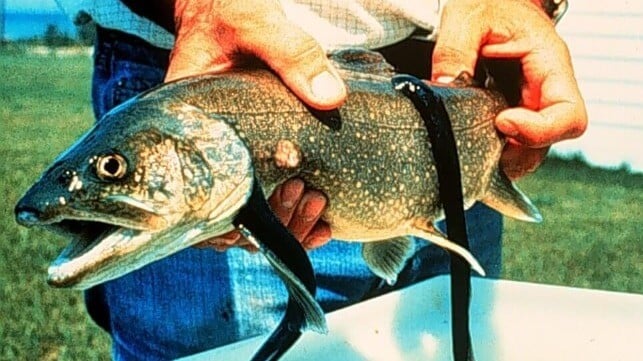Due to COVID Disruption, Invasive Sea Lampreys Rebound in Great Lakes

Fisheries officials in the Great Lakes have found a new and unusual aftereffect of the COVID-19 pandemic: a resurgence in the population of sea lampreys, a pernicious threat to commercial fisheries in the region. The return of the lamprey shows just how hard it is to combat an established invasive species, even after decades of effort.
Since the Great Lakes' first exposure to oceangoing shipping, the freshwater lake system has had serious challenges with invasive species from overseas, like the notorious zebra mussel. But one of the worst scourges came from closer to home: the sea lamprey, a North Atlantic native. When the Welland Canal was improved in the late 19th century, lampreys made it past Niagara Falls and into Lake Erie. The female of the species can produce 100,000 eggs a year, and without its natural predators, the lamprey rapidly spread to every corner of the lake system.
This was a disaster for the lakes' commercial fisheries: lake trout did not evolve alongside lampreys, and tended to die from the wounds that the parasite inflicts on its host. In the North Atlantic, lampreys typically leave the host fish alive; in the Great Lakes, each lamprey can kill up to 40 pounds of fish per year.
Between the 1920s and the early 1960s, as the lamprey population exploded, the commercial catch of lake trout plummeted by 98 percent due to lamprey predation. Canadian and American fishery officials decided to take serious countermeasures, and they launched a bilateral agency - the Great Lakes Fishery Commission - to look for solutions. After several years of research, the commission began targeting the invasive fish at its spawning grounds, using a chemical compound that is toxic to lamprey larvae but relatively harmless for other species.
Over the course of six decades, targeted applications of this compound brought lamprey populations down by more than 90 percent - a rare, resounding success in the realm of invasives control. However, the pandemic disrupted the joint U.S.-Canadian lamprey program for two years. In 2020-2021, lamprey control measures were reduced because of COVID-19 measures, and the parasitic fish were left to breed.
By 2024, lamprey numbers were above target in all of the lakes. Officials expected this outcome, and predict that lamprey populations will stay higher than wanted through 2025-6 before returning to trend. If anything, the Great Lakes Fishery Commission says, the recent uptick is proof that the lamprey population must be managed continuously.
"After more than six decades of successful sea lamprey control, the reduced effort during the COVID-19 pandemic shows that if controls are ceased or relaxed for even a short period of time, sea lamprey populations will rebound, and the fishery will suffer," said Jim McKane, the Commission’s vice-chair.
